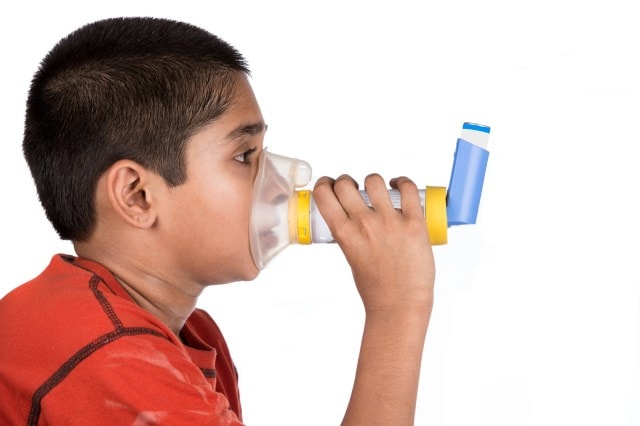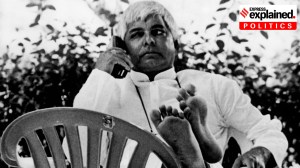Myths and facts about wheezing in children under 5 years
When a child wheezes, the first question that happens in one’s mind is whether the child has asthma and whether will he require medicines for a long duration.
 Myths and facts about wheezing in children under 5 years
Myths and facts about wheezing in children under 5 yearsWheezing is a widespread problem in children under 5 years old in India. According to the American Academy of Paediatrics, 50% of children would have had at least one episode of wheezing before 5 years of age. When a child wheezes, the first question that happens in one’s mind is whether the child has asthma and whether will he require medicines for a long duration. In this article let’s discuss about the myths and facts about wheezing and its treatment in children under 5 years.
Myth 1: All wheezing is asthma
Fact: It is a fact that viral infections are the most common cause of wheezing in children under five years of age. Over 60% of children who experience recurrent wheezing before the age of 5 will stop wheezing and won’t develop asthma after that age. However, if there’s a family history of asthma or allergy-related skin disease, the child may continue to wheeze even after the age of 5.
Myth 2: Inhalers are harmful and addictive when used in children
Facts: Inhalers are a safe and non-addictive medication that can be used by children to relieve and control asthma symptoms in the long run. They are considered a lifeline for most wheezing children and should be used as the first-line medication prescribed by a doctor, instead of syrups or tablets. This recommendation is supported by international organizations such as the Global Initiative for Asthma (GINA) for children under the age of 5.
Myth 3: Inhalers used in children are similar to what is given to adults. Will that lead to overdosage?
Fact: Aerosol delivery devices are the same for adults and children. However, the dosage and frequency of use may differ based on the age and severity of the wheeze. Also, the amount of the drug deposited in the lungs depends upon the breathing capacity of the person. Adult lungs can handle more air volume, resulting in more medication deposited for the same dosage. Pediatric lungs are smaller, so they receive less medication. It is important to consult a doctor for appropriate dosage to control symptoms.
Myth 4: Inhalers contain steroids that can harm child growth and development.
Fact: Inhalers contain steroids in microgram doses, which is 1000 times less than the dose in syrups and tablet steroids given during wheeze exacerbations. Inhalers are like ointments, in which the drug gets deposited on the surface where the action is required while oral medications when taken, get absorbed from the intestines into blood, resulting in delivery of the drug to all body parts where the action is not intended. Hence the side effects of inhalers are less as compared to oral medications.
Myth 5: Inhalers should be used only for severe cases of wheezing
Fact: Inhalers have medications that not only relieve but also prevent recurrent wheezing in the long run. Even if the child has mild persistent asthma symptoms, it is more controllable with inhalers than any other oral medications and is the standard of care.
Myth 6: Inhalers can cure asthma
Fact: Inhaler medications are classified into two categories – relievers and controllers. Relievers are used to alleviate wheezing, while controllers are given to prevent recurrent wheezing in children. Asthma or any allergy can be managed with medications and avoidance of triggers. It’s important to note that control is possible, but cure is not. However, as previously mentioned in this article, most children who experience wheezing before the age of 5 are not affected by allergies or asthma, and their symptoms may improve after the age of 6.
Myth 7: Nebulizers are better than inhalers and can be used at home
Fact: Nebulizers are helpful for sick children who have difficulty breathing and wheezing. However, for children who do not have breathing problems, inhalers are more than enough to provide relief. It is not safe to use nebulizers at home for children under 5 years old, as using home machines without oxygen can lead to a decrease in oxygen levels and unconsciousness. Instead, inhalers can be used at home. If there is no improvement with inhalers, it is important to consult a pediatrician or go to the emergency room for further treatment.
In conclusion, wheezing in children is mostly due to viral infections. Inhalers are a safe and effective way to manage wheeze in children under 5 years of age. It is essential to help build awareness about inhalers as they form the most important way by which wheeze is treated. Parents and caregivers should consult with their child’s doctor to ensure that their child is using inhalers correctly and effectively.
 Dr. Karthik Narayanan R, MD (Pediatrics), DM (Pediatric critical care and Emergency Medicine)
Dr. Karthik Narayanan R, MD (Pediatrics), DM (Pediatric critical care and Emergency Medicine)
Senior Consultant, Rainbow Children’s Hospital, Chennai
MD (Pediatrics), DM (Pediatric critical care and Emergency Medicine), Senior Consultant
Rainbow Children’s Hospital, Chennai
Disclaimer:
This content is sponsored and does not reflect the views or opinions of IE Online Media Services Pvt Ltd. No journalist is involved in creating sponsored material and it does not imply any endorsement whatsoever by the editorial team. IE Online Media Services takes no responsibility for the content that appears in sponsored articles and consequences thereof, directly, indirectly or in any manner. Viewer discretion is advised.



- 01
- 02
- 03
- 04
- 05

 Continue with Facebook
Continue with Facebook Continue with Google
Continue with Google


























